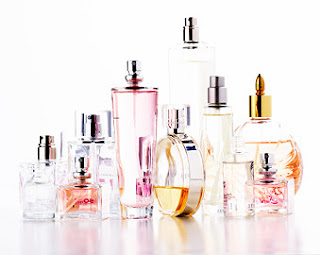Perfumes have a pleasant smell and they stimulate
receptors in the nose. People like to use perfumes to make them smell nice and
giving a good impression to others in daily life. We always use them , but do
you know that the perfumes that we use
are related to organic chemistry too?
Perfumes are non-toxic chemical. People who wear it does
not get poison and this can prevent the wearer suffer for skin rashes. It is
insoluble in water but evaporates easily. Perfumes are categorize according to
their concentration of essences or aromatic oils they contain. There are four
types of perfumes, which are eau de cologne, eau de toilette and eau de parfum
and perfume.
Eau de cologne contain about 7% essence dissolve in
alcohol of 60º or 70º. It doesn’t last long and can reapplied directly to skin.
Eau de toilette contain up to 10%aromatic essence. It
evaporates and fade away quite quickly.
Eau de parfum contain
over 15% concentration of oils, sometimes reaching as high as 20%. Can be used
to spray on hair or clothing.
Perfume contain 40% high concentration of essences.
The
average concentration of essence in a perfume is 25%, which makes it the
longest lasting of all the scent categories.
Due to the high concentration of essences in perfume,
wearing perfume is last longer than wearing eau de cologne or eau de toilette. Perfume
are made up by the mixture of fragrant essential oils, or aroma compound ,
fixatives and solvents. Also, Ester are used in perfumes , it is made by
reacting an alcohol with an organic acid.
Esters are chemicals with pleasant smells. It occur
naturally but can be made in laboratory by condensing an alcohol with an
organic acid which at least one -OH (hydroxyl) group is replaced by an -O-alkyl
(alkoxy) group. This reaction is called as esterification.
Word Equation:
Alcohol + organic acid
→ ester +
water
Different kind of alcohol and organic acid will form different
kind of names and smells of ester.
Alcohol Organic
acid Ester made
Smell of ester
pentanol ethanoic
acid pentyl
ethanoate pears
octanol ethanoic
acid octyl ethanoate bananas
pentanol butanoic
acid pentyl
butanoate strawberries
methanol butanoic
acid methyl butanoate pineapples
For example:
Methanol + Butanoic acid
→ Methyl Butanoate +
Water
This video has explained how esterification reaction occurs and how different kind of smells of perfumes made:
Written by: Tanasha Azalea Suhandani, Lee Miaw Woon, Chong Hui Qian, Sathish Kumar Letchumanan

No comments:
Post a Comment